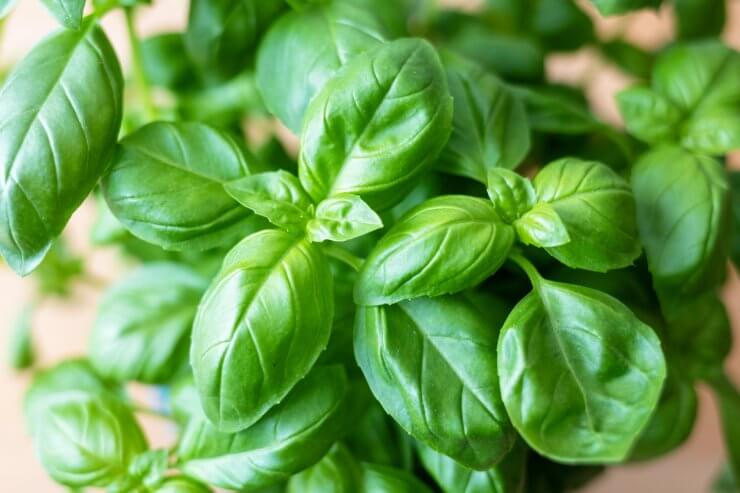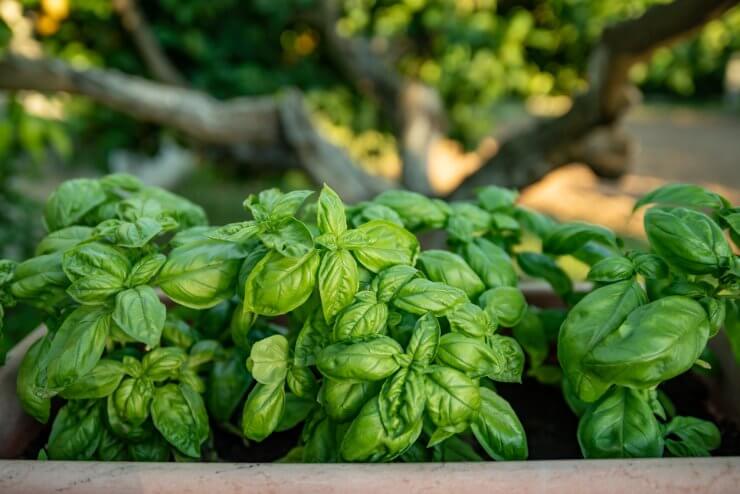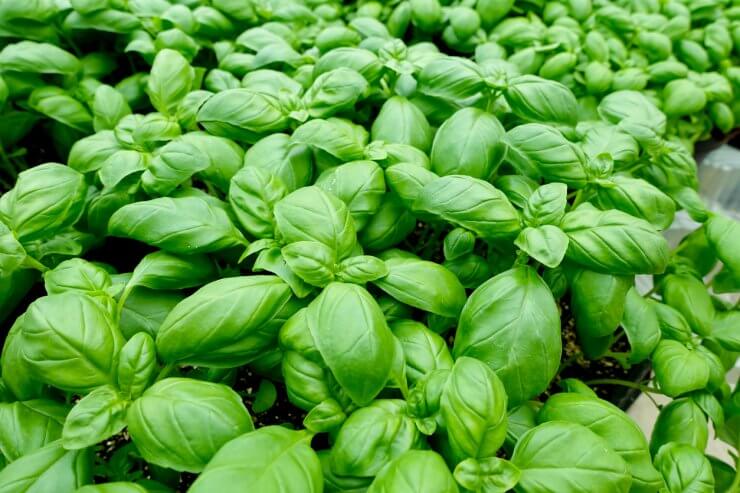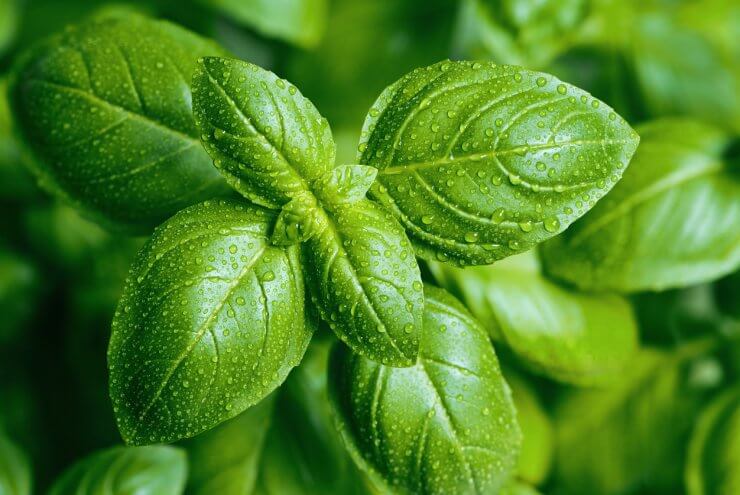
So there you are, scissors in hand, ready to snip some fragrant basil for your pasta sauce. You grab a leaf, take an anticipatory nibble, and–wait a minute–is that… licorice? Unless you’ve accidentally wandered into a fennel patch, something strange is happening with your sweet basil. Before you blame garden gnomes for swapping your plants in the night, let’s dig into why your Genovese got weird and how to get your pesto back on track.
The Great Basil Flavor Mystery: Solved!
First things first–you’re not imagining things! That licorice or anise flavor in your basil is real, and mostly normal. But when it’s too strong, you’re not the first gardener to experience this herbal identity crisis. I like to call it “the basil betrayal.” One day it’s making your margherita pizza dreams come true, the next it’s trying to rebrand itself as a completely different herb.
The primary culprit behind this flavor shift is simple but sneaky: your sweet basil plant has begun to bolt. “Bolting” is plant-speak for when your leafy friend decides it’s time to flower and produce seeds. It’s basically your plant shouting, “Time to make baby basils!” While admirable from a reproductive standpoint, this botanical birds-and-bees moment changes your basil’s chemical makeup.
When basil bolts, it increases production of certain compounds–particularly estragole and methyl chavicol–which happen to be the same flavor compounds found in tarragon and anise. So what you’re tasting isn’t some weird mutation, just your plant’s natural life cycle doing its thing. Science is neat, huh?
Why is My Basil Having a Mid-Life Crisis?

Your basil didn’t wake up one morning and decide to taste like licorice just to spite your culinary plans. Several factors can trigger bolting:
Heat Stress: Too Hot to Handle
Sweet basil is like that friend who claims they love summer but actually complains when the temperature rises above 85°F. Extended periods of hot weather tell your basil to speed up its life cycle. “It’s now or never!” the plant thinks, rushing to reproduce before conditions potentially worsen.
Age: The Inevitable March of Time
Just like how I can’t pull all-nighters anymore without needing a three-day recovery period, basil plants have their own aging timeline. After about 6–8 weeks of leaf production, they naturally start thinking about the next generation. It’s the circle of life, just with more pesto potential.
Daylight Duration: It’s All About Timing
Basil is surprisingly attuned to day length. As summer progresses and days begin to shorten (even slightly), basil plants get the signal that fall is approaching. This triggers the flowering response, which brings on our unwanted licorice flavor.
Root Stress: Cramped Quarters
If your basil is container-grown and has become root-bound, the resulting stress can trigger early bolting. Those twisted roots are essentially the plant equivalent of uncomfortable shoes–and nobody makes good decisions when their feet hurt.
Basil Rescue 911: How to Fix the Licorice Situation

Don’t worry–your licorice-flavored basil crisis isn’t a lost cause! Here’s how to get your basil back to its sweet, delicious self:
Snip Those Flowers (Ruthlessly)
The moment you spot flower buds forming–those little clusters at the top of stems–channel your inner Edward Scissorhands and remove them immediately. Be vigilant! Check your plants daily during warm weather, as buds can form quickly. This sends your plant the message: “Not today, reproduction! We’re focusing on leaves here.”
Harvest Strategically
Regular harvesting actually helps prevent bolting. When you remove the top sets of leaves (always cut just above a leaf node), you’re essentially telling the plant to branch out rather than grow tall and flower. Aim to harvest about one-third of the plant each time, cutting from the top down.
Provide Some Shade During Heat Waves
If temperatures are climbing into the 90s, give your basil some afternoon shade. A simple shade cloth or even positioning a lawn chair to block the intense afternoon sun can help prevent heat stress. Your basil appreciates SPF protection just like you do!
Start Fresh (The Succession Planting Secret)
Here’s a pro tip that keeps my kitchen in basil all season: plant new basil seeds every 3–4 weeks throughout the growing season. This succession planting ensures you always have young, sweet-tasting plants coming along when older ones start their licorice transformation.
The Root Relief Method
If your container basil is looking stressed, check those roots! Gently remove the plant, tease apart any circling roots, then repot in fresh soil in a slightly larger container. Sometimes a little root room is all a plant needs to chill out on the bolting front.
Prevention: Basil Without the Botanical Drama

Now that we’ve addressed the emergency situation, let’s talk about preventing future licorice incidents:
Choose Your Varieties Wisely
Some basil varieties are less prone to bolting than others. ‘Genovese Compact’ and ‘Spicy Globe’ basil varieties tend to stay bushy rather than shoot up quickly. ‘African Blue’ basil actually tastes good even after flowering, though it has a more complex flavor than sweet basil.
Location, Location, Location
Plant your basil where it gets morning sun but some protection from the intense afternoon heat. Eastern exposure is ideal in most climates. Basil needs 6–8 hours of sunlight but doesn’t need to be roasted alive.
Water Consistently
Basil plants stressed from irregular watering are more likely to bolt. Keep the soil consistently moist but not waterlogged. A 2-inch layer of mulch helps maintain soil moisture and temperature–think of it as a spa treatment for your herb garden.
Feed Wisely, Not Too Well
While it seems counterintuitive, too much nitrogen fertilizer can actually encourage faster bolting. Use a balanced organic fertilizer at half-strength, applying every 4–6 weeks during the growing season.
When Life Gives You Licorice Basil…

If you’ve tried everything and your basil is still rocking that anise flavor, don’t compost it just yet! Some culinary traditions specifically call for this flavor profile:
- Thai and Vietnamese dishes often pair beautifully with licorice-noted basil
- Create a unique infused oil that works wonderfully in salad dressings
- Dry the leaves for a different dimension in your spice collection
- Craft specialty cocktails where the anise notes complement gin or vodka
The Basil Bottom Line
Remember, your basil isn’t misbehaving–it’s just doing what millions of years of evolution programmed it to do. By understanding the plant’s natural tendencies, you can work with it rather than against it.
With regular harvesting, vigilant flower removal, and smart preventative measures, you can keep your sweet basil tasting sweet all season long. And if all else fails, there’s always the garden center for a fresh start. After all, in gardening as in life, sometimes we all need a do-over. Want to learn more about growing basil? Check out our Basil Gardening Guide.
So next time your basil decides to throw a licorice-flavored curve ball, you’ll be ready–scissors in hand, botanical knowledge in mind, and maybe a backup plant already growing. Happy snipping!
How do you optimize the flavor of your basil? Leave a comment and let us know.


 Previous
Previous

